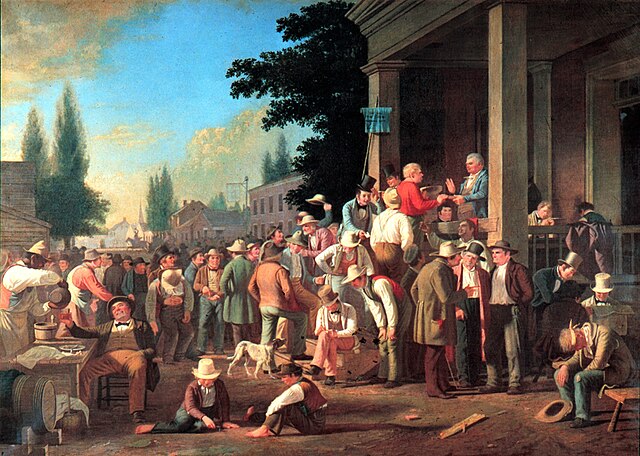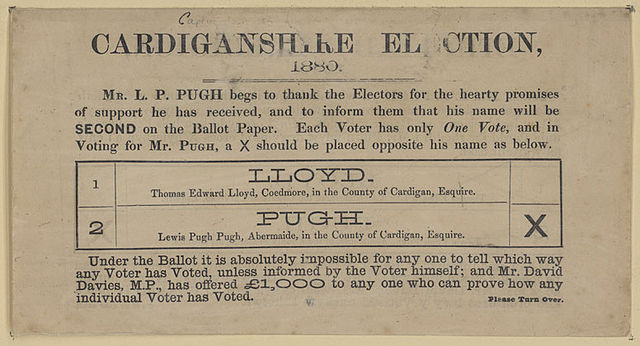Elections in the United States
In the politics of the United States, elections are held for government officials at the federal, state, and local levels. At the federal level, the nation's head of state, the president, is elected indirectly by the people of each state, through an Electoral College. Today, these electors almost always vote with the popular vote of their state. All members of the federal legislature, the Congress, are directly elected by the people of each state. There are many elected offices at state level, each state having at least an elective governor and legislature. There are also elected offices at the local level, in counties, cities, towns, townships, boroughs, and villages; as well as for special districts and school districts which may transcend county and municipal boundaries.
An 1846 painting by George Caleb Bingham showing a polling judge administering an oath to a voter
Voters cast ballots for the 2020 elections at Roosevelt High School in Des Moines, Iowa
An election is a formal group decision-making process by which a population chooses an individual or multiple individuals to hold public office.
A ballot box used in France
Roman coin depicting election
A British election campaign leaflet with an illustration of an example ballot paper, 1880
In 1946 Mannerheim resigned as president of Finland, and the parliament of Finland elected elected prime minister Paasikivi to succeed him, with 159 votes.






